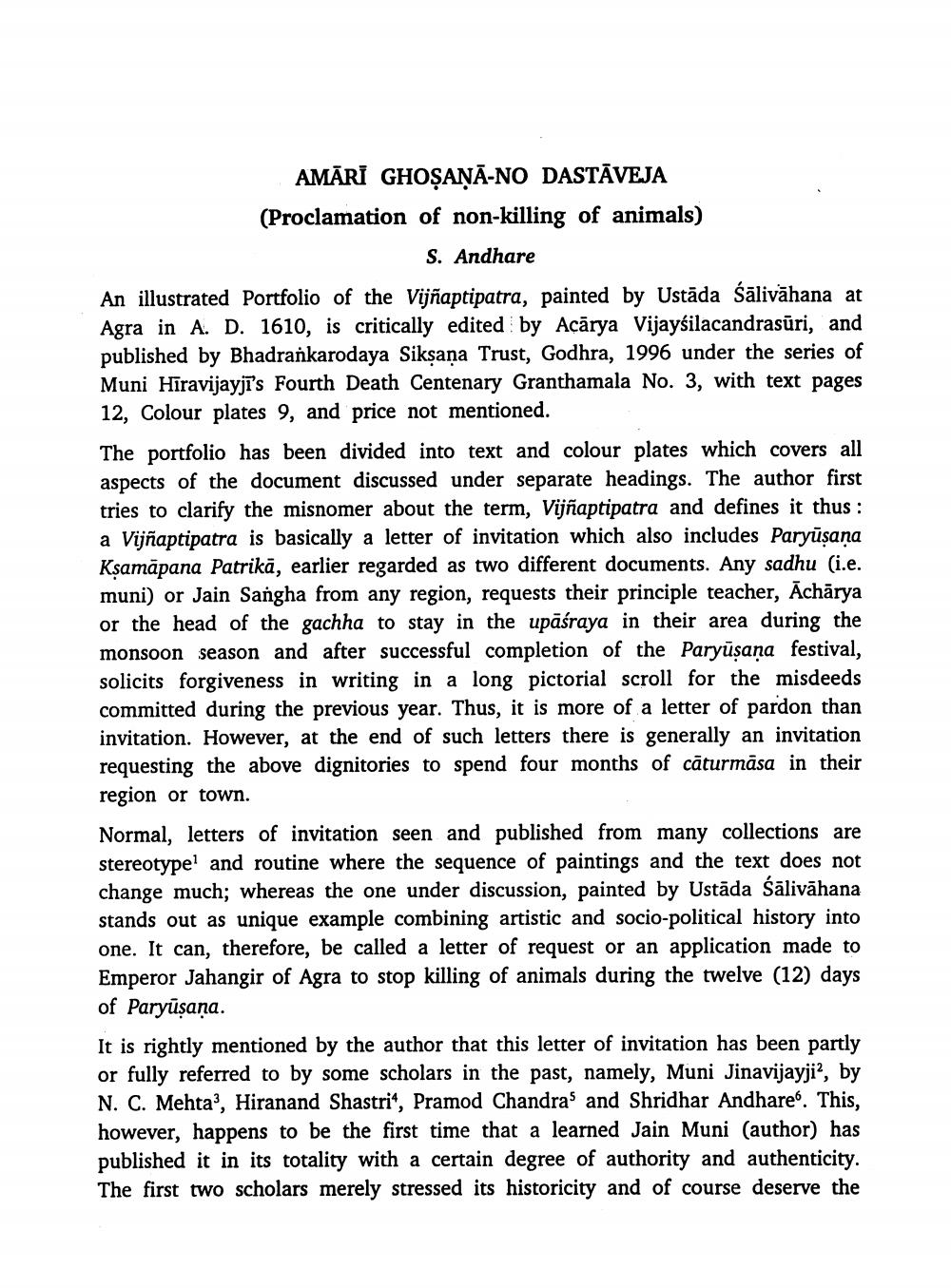________________
AMĀRĪ GHOȘAŅĀ-NO DASTĀVEJA (Proclamation of non-killing of animals)
S. Andhare
An illustrated Portfolio of the Vijñaptipatra, painted by Ustāda Śālivāhana at Agra in A. D. 1610, is critically edited by Acārya Vijayšilacandrasūri, and published by Bhadrankarodaya Siksana Trust, Godhra, 1996 under the series of Muni Hiravijayji's Fourth Death Centenary Granthamala No. 3, with text pages 12, Colour plates 9, and price not mentioned. The portfolio has been divided into text and colour plates which covers all aspects of the document discussed under separate headings. The author first tries to clarify the misnomer about the term, Vijñaptipatra and defines it thus : a Vijñaptipatra is basically a letter of invitation which also includes Paryūsana Ksamāpana Patrikā, earlier regarded as two different documents. Any sadhu (i.e. muni) or Jain Sangha from any region, requests their principle teacher, Achārya or the head of the gachha to stay in the upāśraya in their area during the monsoon season and after successful completion of the Paryūṣaṇa festival, solicits forgiveness in writing in a long pictorial scroll for the misdeeds committed during the previous year. Thus, it is more of a letter of pardon than invitation. However, at the end of such letters there is generally an invitation requesting the above dignitories to spend four months of căturmāsa in their region or town.
Normal, letters of invitation seen and published from many collections are stereotype and routine where the sequence of paintings and the text does not change much; whereas the one under discussion, painted by Ustāda Sālivāhana stands out as unique example combining artistic and socio-political history into one. It can, therefore, be called a letter of request or an application made to Emperor Jahangir of Agra to stop killing of animals during the twelve (12) days of Paryūṣaṇa. It is rightly mentioned by the author that this letter of invitation has been partly or fully referred to by some scholars in the past, namely, Muni Jinavijayji?, by N. C. Mehta, Hiranand Shastri“, Pramod Chandras and Shridhar Andhare. Thi however, happens to be the first time that a learned Jain Muni (author) has published it in its totality with a certain degree of authority and authenticity. The first two scholars merely stressed its historicity and of course deserve the




